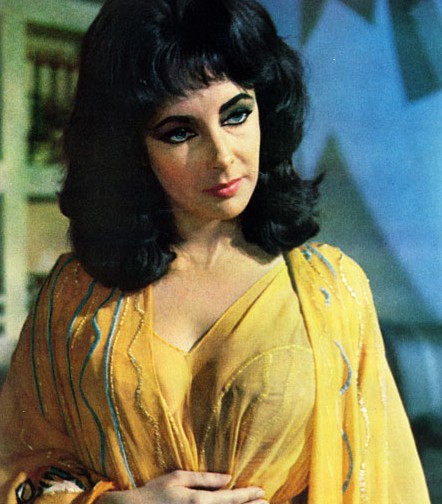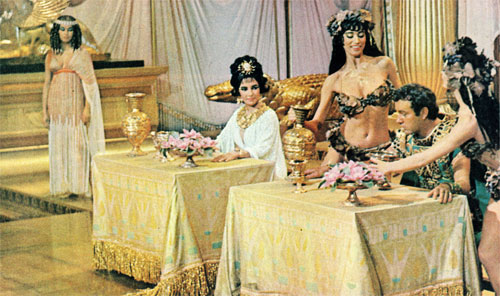The Sand Pebbles (1966)
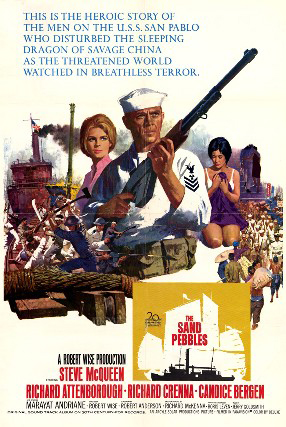
Drawing on his own experience aboard a Yangtze gunboat in the 1960s, author Richard McKenna set the time of his oriental tale a decade earlier, during the Northern Expedition in China. The three-part story first appeared in the Post in November 1962 and made its film debut in 1966.
Pat Boone had campaigned hard for the role of protagonist Jake Holman, but director Robert Wise’s first choice was Paul Newman. In the end, the role went to Steve McQueen.
Initially slotted for nine weeks of filming, the production took seven months to complete thanks to a series of unfortunate delays, including a capsized camera boat which ruined the soundboard, monsoons in Taipei, an abscessed molar that caused McQueen to fall ill, and rumored “hostage taking” of several cast member passports by the Chinese government until additional taxes were paid from filming. At the studio’s insistence, Wise reluctantly occupied the downtime with a “fill in” project he had originally rejected for being “too saccharine”—1965’s The Sound of Music.
For its troubles, Sand Pebbles was nominated for eight Golden Globes, including a win for Richard Attenborough for Best Supporting Actor, and eight Oscar nods, including Best Supporting Actor, Best Picture, and Best Actor—the only Academy Award nomination of Steve McQueen’s career. Wise was said to be so proud of the film that he held annual parties with surviving cast members to commemorate its completion.
Elizabeth Taylor and The Cleopatra Spectacle
It probably killed the old “studio system” in Hollywood. The Taylor-Burton version of “Cleopatra,” originally budgeted for $2 million, wound up costing Twentieth Century Fox $44. The studio spent two-and-a-half years producing the film, which featured lavish sets, full-scale barges, an army of “extras,” and 65 costume changes for its star, Elizabeth Taylor.
The result was an extravaganza that clocked in at six hours in the director’s cut. The studio cut the film down to four hours for the premier and three hours for theatres, which still proved a little too long for public taste, even with all the big-name stars and the gaudy staging. “Cleopatra” may have been 1963’s top grossing film, but it only recovered half of the studio’s expenses that year. Twentieth Century Fox was brought dangerously close to financial collapse that it couldn’t breath easily until 1965 when it was saved by the highly popular “Sound of Music.”
If the movie was less successful as a theatrical release, it was a stunning triumph as a tabloid sensation. The romance that sprang up between Taylor and co-star Richard Burton made “Cleopatra” the object of continual attention from the media. Writing about his work in producing the movie, Walter Wanger said “I have been told by responsible journalists there was more world interest in Cleopatra… than in any other news event of 1962”—a considerable claim in the year of the Cuban missile crisis.
Several actresses had been suggested to play the title, including Dorothy Dandridge, Joanne Woodward, Joan Collins, Marilyn Monroe, Kim Novak, Audrey Hepburn, Sophia Loren, and Susan Hayward.
But Wanger wrote that Taylor had been his only choice since the project began. And the studio’s faith in her was so great, it continued to sink millions into a picture that probably would have been cancelled if it had another leading lady.
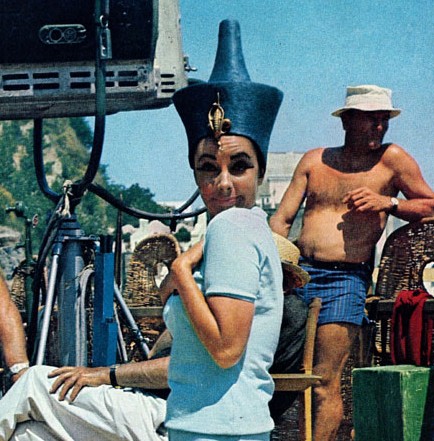
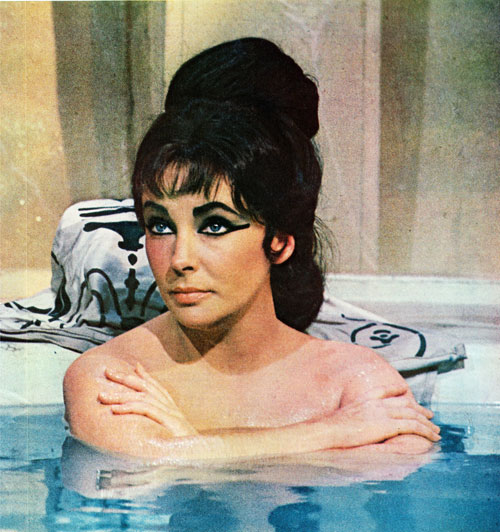
See also:
Remembering Elizabeth Taylor
Elizabeth Taylor: AIDS Activist
